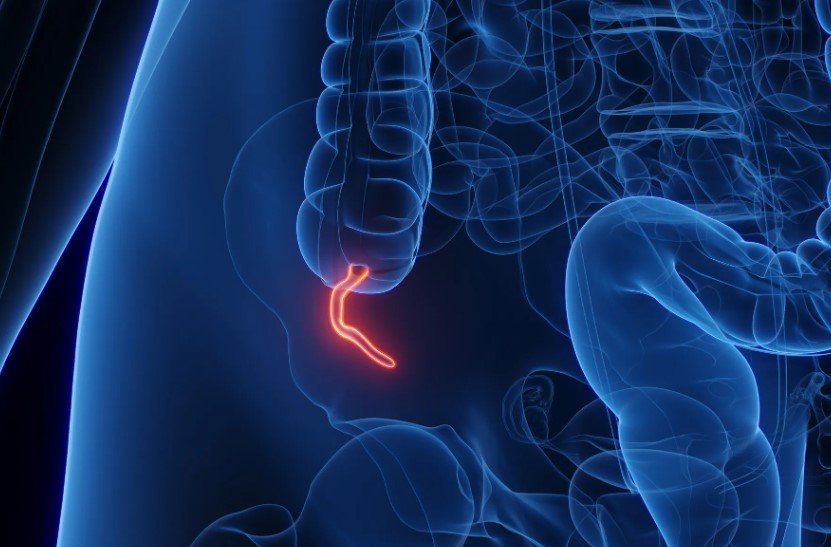Rare disease once overlooked now sees triple-digit spike in younger generations, sparking questions about modern lifestyle and environmental triggers
A type of cancer barely on the public radar is creeping into view — and not in a good way. Appendix cancer, a condition so rare it’s often an afterthought in medical training, is now being diagnosed more frequently in younger Americans — particularly those born in the 1980s.
Researchers say it’s not a fluke. A new study published in the Annals of Internal Medicine reveals a worrying trend that could reshape how we understand cancer risks for people under 50. And no, this isn’t just about better detection. Something’s genuinely changing.
Millennials and Appendix Cancer: A Concerning Correlation
Let’s get one thing out of the way: appendix cancer is still rare. But that doesn’t mean the numbers don’t matter.
The team at Vanderbilt University Medical Center analyzed decades of data from the National Cancer Institute’s SEER database, tracking cases of appendiceal adenocarcinoma from 1975 through 2019. What they found was jarring.
In people born around 1945, cases were minimal. Fast forward to those born in 1980 — the risk had tripled. For the 1985 cohort? It quadrupled.
Just to be clear, these aren’t random blips on a graph.
These are statistically significant spikes, tied directly to birth year.
And that’s where things get spooky.

It’s Not the Surgeries — It’s Something Else
Some might wonder, “Maybe more people are getting their appendixes taken out, and that’s why doctors are finding more cancer?” Nope.
That was tested. The rate of appendectomies has held pretty steady over the years. Which means the rising cancer rates aren’t just about more surgeries or better imaging.
Dr. Andreana Holowatyji, lead author of the study, put it plainly: “Something is changing — and it’s probably not just one thing.”
What could it be?
-
Higher obesity rates among young adults
-
Exposure to endocrine-disrupting chemicals
-
Shifts in the gut microbiome
-
Ultra-processed diets and sedentary lifestyles
No single factor seems to explain the spike. Instead, it’s likely a mix of everything above — the modern American lifestyle in full color.
Digging Into the Data: How Bad Is It, Really?
Let’s break down the generational shifts more clearly. Here’s how diagnosis trends look across different birth years, based on the SEER data:
| Birth Year | Relative Risk of Appendix Cancer |
|---|---|
| 1945 | Baseline (1x) |
| 1960 | 1.8x |
| 1980 | 3.1x |
| 1985 | 4.2x |
That’s not a subtle increase — it’s a massive leap. And it demands attention, both from the medical world and the general public.
This Isn’t Just America’s Problem
The study focused on U.S. cases, yes. But it’s not hard to connect the dots globally.
In India, lifestyle changes among millennials and Gen Z mirror many of those in the U.S. Think rising fast-food intake, digital addiction replacing physical activity, worsening air quality — it’s all part of the mix.
One sentence here: Young Indian adults aren’t immune.
In fact, India is already seeing a surge in early-onset breast, colon, and stomach cancers. Appendix cancer may be following that same arc — just without the spotlight yet.
Doctors in India, much like their counterparts in the U.S., rarely consider appendix cancer unless symptoms scream for attention. And that’s a problem.
Silent Symptoms, Missed Diagnoses, and Late Realizations
Appendix cancer doesn’t come in like a wrecking ball. It’s sneaky. Vague symptoms make it a master of disguise — often masquerading as gas, IBS, or period cramps.
Typical early signs include:
-
Mild abdominal pain
-
Unexplained bloating
-
Digestive discomfort
-
Appetite loss
You see the issue? These aren’t red flags; they’re everyday annoyances.
Which is why diagnosis often happens late — when surgery or scans for something else incidentally reveal a tumor.
One-sentence paragraph here: That delay can make all the difference.
Dr. Holowatyji warned, “The lack of awareness — both among the public and physicians — means many cases are being caught later than they should.”
What’s Next? Researchers Want Urgent Answers
The authors of the study are calling for more research, and quickly. They’re not just worried about understanding what’s causing the uptick — they want to prevent it from getting worse.
Here’s what experts say needs to happen next:
-
Focused studies on gut microbiome changes by generation
-
Tracking chemical exposures tied to industrial and household products
-
More public awareness about rare cancers in young adults
-
Improved screening protocols for non-traditional cancer symptoms
They’re also pushing for global data comparisons to see if this is truly a U.S.-only issue, or just more visible there because of robust cancer registries.
